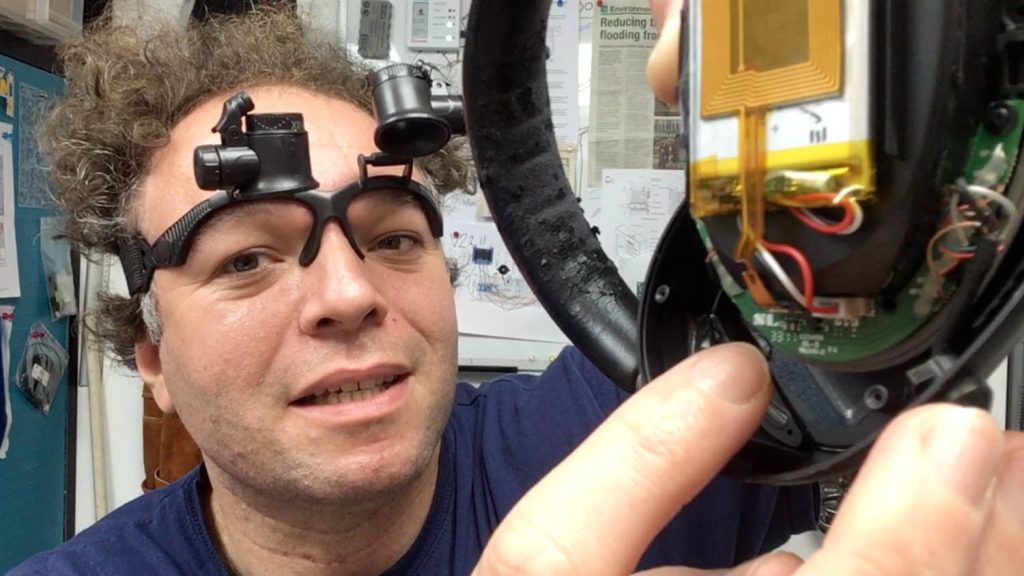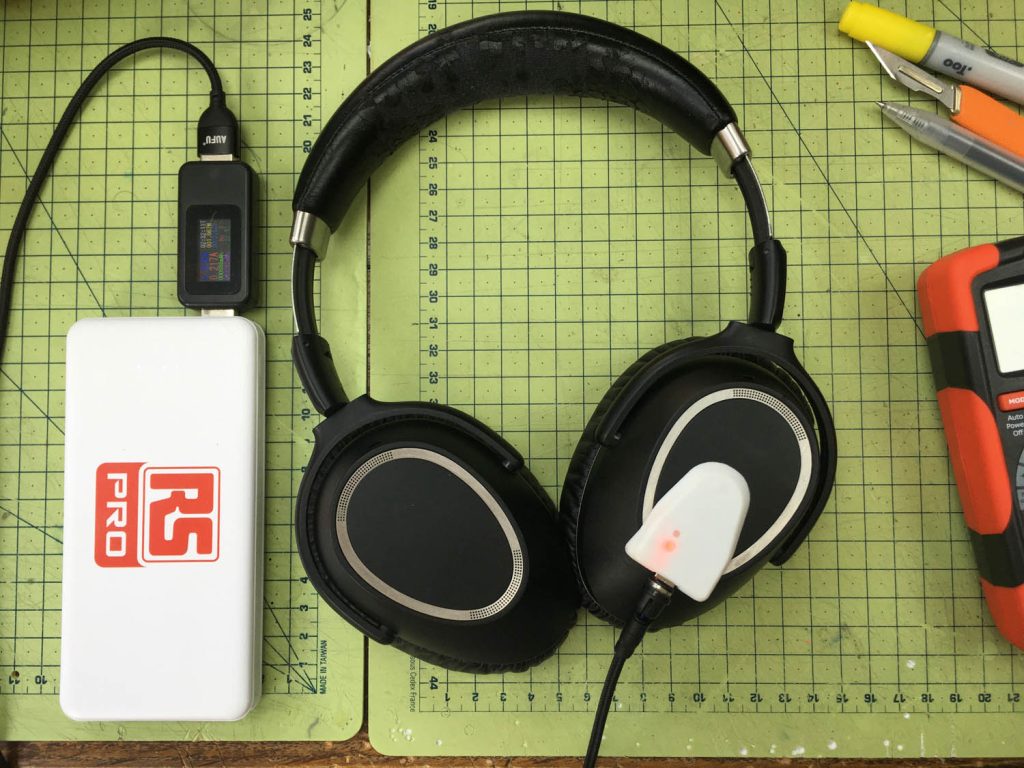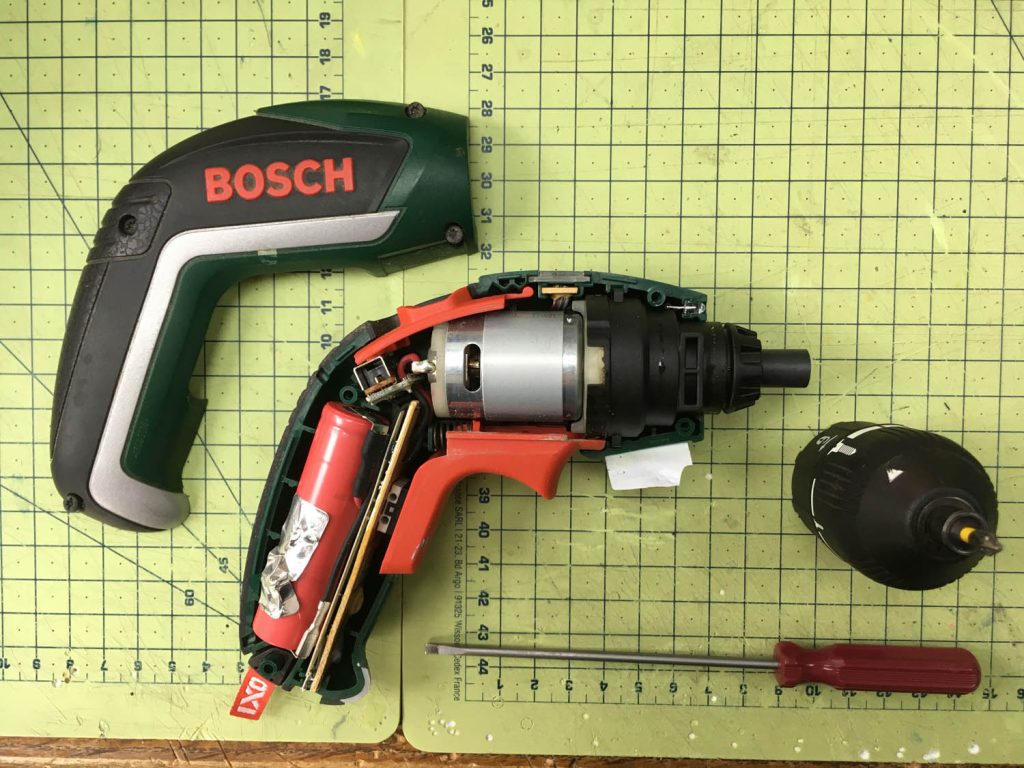Creative technologist Jude Pullen has turned his hand to ‘applied journalism’, spending the last six months taking apart everyday products to assess their repairability and discover what designers could do to build more fixable products
When the battery failed on his noise-cancelling headphones, Jude Pullen quickly stumbled down a repairability rabbit hole.
It was an eye-opening experience, he says. “I was left thinking that this should be so much easier. I’d expected to go inside, see a couple of pull-out leads and get on with it, but there was a rat’s nest of cables in there that I was quite shocked by.” The takeaway for Pullen was that these headphones had been designed with manufacturing assembly in mind, but not repairability. “I don’t think that’s me trolling Sennheiser or being unfair,” he adds.
In fact, it’s a pretty common scenario, as Pullen was soon to discover. Drawing on his years of expertise and experience as a designer at the likes of Dyson and LEGO, he embarked on a mission to tear down other consumer electronics and uncover their own repairability failings.
Repairable for who?
Since the early days of mass production, products have been designed for quick, easy and cost-effective assembly. Repairability is seldom considered – unless it’s lucrative to do so. In other words, Pullen’s headphones are the tip of a very large and awkward iceberg.
But with ‘Right to Repair’ legislation starting to develop teeth in many jurisdictions, Pullen’s focus on the fixability of products could not be more timely.
“I thought, if this is hard for an engineer like me, with almost two decades of experience, then this isn’t easy for Joe Public,” he explains. “I wanted to reconnect with that point – to understand the economics, the rationale, the safety, the litigation, the legislation behind why a product is like it is.”
In fact, he adds, it’s sometimes an intelligent move to err on the conservative side of things, particularly when it comes to designing something like a battery-powered device.
“When you look at the lithium polymer chemistry, the fact that a device can basically catch fire does not mean at any point it is going to be an easy thing to get through compliance, or your legal team, or indeed your PR team.”
Pullen’s view is that designers need to find a sensible middle ground. But are companies willing and able to make something inherently more repairable, even if they can’t advertise it as such?
As an example, he highlights an IKEA air quality monitor. To unfasten the case, you need a Torx screwdriver. You are then presented with a PCB that, as Pullen puts it, has been labelled in a way that only a developer would recognise as an invitation to tinkering. It labels voltages. It labels GPIO pins. It labels additional pads for soldering purposes. “
At no point on the packaging does it say, ‘Hack me’. Does it say repair me? It doesn’t, but it is so obviously designed to encourage that behaviour,” he says. “But the subtlety is not its difficulty. The subtlety is it’s a signal to only those who are in the know.”
A more approachable example is found when changing the battery in a Bosch electric screwdriver. This features a hybrid Torx/flathead option for its four screws. Inside is a lithium battery with the serial number very clearly printed on it. If you type that into the Internet, you can buy a new one and clip it to the two spade terminals.
“This might prove intimidating for people like my parents, but it’s not intimidating for a person who’s worked at Dyson or indeed at a repair shop. In principle, a qualified or experienced person could definitely repair it.”
Pullen explains that Right To Repair legislation typically dictates that a product needs to be repairable, but then makes a distinction between repairability for a member of the general public and for a qualified repair person. It’s perhaps not surprising that most big companies don’t want to deal with the many issues associated with letting unqualified customers tinker with their products.
“The caveat – and this is the tricky, contentious bit of the legislation – is that at no point does it say that repair has to be easy. At no point does it say it has to be attainable at a fair price,” says Pullen.
It might be, for example, that the repair process required to replace a cracked screen on a product is so inordinately complex and expensive that no sane person would ever set up a repair shop providing that service. So a manufacturer could deliberately make products that are extremely difficult or cost-prohibitive to repair, but would still be able to say that all of its products are repairable – and importantly, still be in compliance.
“That’s why I think the first wave of change makers are going to be smaller companies that ‘do the Bosch thing’. And that’s not to say that I know for a fact that Bosch has deliberately done it this way, but whether deliberately or accidentally, it’s made a product that, to my eyes, is easy to repair.”
Fresh thinking
So how is the future of repairability likely to look? Will we see repairability clearly marked on product packaging, alongside energy efficiency? In fact, a ratings system for repairability would be a starting point. If a Nokia G-Series smartphone or a Fairphone – two products that are actively marketed as repairable – were awarded A ratings, that would immediately impact other phone companies with models ranked C, D or lower.
It’s clear that something more sophisticated than a traffic light system is needed, says Pullen, adding that the sheer range of metrics involved doesn’t lend itself to a quick and easy sticker to apply to a fridge, for instance. However, even a basic ratings system would slowly start to weigh on big brands, making their products start to look old-fashioned and slow to adapt to more progressive times when competitors achieved higher rankings.
And this, he says, is where his ‘applied journalism’ work comes in. A troll might attack a brand online for offering no replaceable battery. Pullen’s mindset as a designer is to instead try to show what could be achieved.
“This is my attempt, and manufacturers are welcome to say, ‘What you forgot is this, this and this – but thank you. At least, we can see that you’re trying to be part of the discussion.’”
It’s this type of conversation between designers, he says, around topics like his headphone battery, which will be needed to help the noise around repairability gain more volume and more compelling examples.
This article first appeared in DEVELOP3D Magazine
DEVELOP3D is a publication dedicated to product design + development, from concept to manufacture and the technologies behind it all.
To receive the physical publication or digital issue free, as well as exclusive news and offers, subscribe to DEVELOP3D Magazine here








